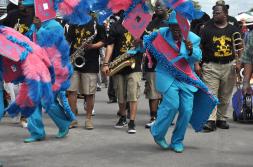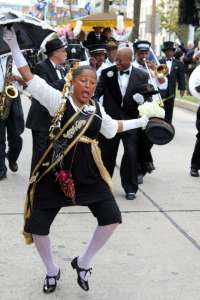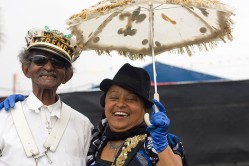People who cannot weep together are people who cannot laugh together…The other side of real grief is real joy. – Malidoma Some´
Be joyful even though you’ve considered all the facts. – Wendell Berry
Why do we express our condolences with the hope that a recently deceased soul can be “at rest?” Why do we pay our last respects? Why indeed must we pay? Why do (white) Americans cry so sparingly at funerals? What do we mean by “closure?”
These are critically important questions. If America is ever to achieve any degree of healing, we must all – as individuals, as communities, as a nation – face an immense backlog of unresolved grief. Grief for our losses, grief for the crimes of genocide and slavery, grief for our mistreatment of the Earth, grief for our unlived lives.
But there is a great opportunity before us: the revival on American soil of indigenous mourning rituals.
In the old thinking death is a communal process, and it requires deep commitment and attention on the part of the survivors. The dead need specific forms of action by the living to complete their transition to the other world. The living need this as well, because completion of their ritual responsibilities moves them into a new phase of life.
When survivors aren’t allowed sufficient time to grieve, however, the wounds close too soon, remain infected and may never heal. In many traditions, the unburied or ungrieved dead haunt those who should have performed the appropriate rites. In ritual terms, such souls are stuck in liminality; they have not accomplished the final phase of the transition – incorporation or initiation into the other world. Like vampires, they are “undead,” “betwixt and between.”
The Balinese, among many other people, believe that the recently deceased are dangerous, even demonic. But once the community completes the rituals of closure, everyone is free to venerate them as ancestral gods (Are we getting into cultural appropriation here? Here’s an essay of mine on that subject). Such traditions are also found in the West. In both Catholicism and Greek Orthodoxy, souls that are not sufficiently sinless to enter heaven must first be purified in Purgatory, and the prayers of the living decrease the time the dead must spend there. Both the requiem mass and the Jewish Kaddish were originally intended to aid the dead in these transitions.
Then, but only when they complete their journey to the other world, they may be able to respond to the prayers of the living. The Tzutujil Maya of Guatemala take this notion further. They claim that the ancestors must be fed through two actions. The first is the willingness to live a full emotional life, especially through mourning. The second is commitment to the regular expression in art, ritual and language of beauty. The Maya feed their ancestors through aesthetic responses to the world.
Extended emotional catharsis and completion of ritual obligation can give closure, to a degree almost inconceivable to the modern mind. Our Protestant culture of denial and tearless, controlled funerals, however, completely overlooks the indigenous insight that properly conducted funerals give everyone who attends (in West Africa, the entire village as well as any visitors) the opportunity, indeed the responsibility, to regularly attend to unfinished business with their own dead, or with anyone else.
But the “real” thing continues to bubble up from the margins where the indigenous soul still thrives. I address the recent, widespread popularity of Day of the Dead (Dia de los Muertos) here. This essay is about how the African imagination of ritual closure has long taken root in New Orleans’ Jazz funeral parades. As I have written extensively in Chapter Twelve of my book Madness at the Gates of the City: the Myth of American Innocence, and here, the traditional Jazz funerals provide us with a profoundly meaningful example of public, communal mourning and the needed closure that can result. 
The funeral parade has two sections, or lines. The “first line” consists of the grand marshals (otherwise known as ritual elders), musicians, the family of the deceased, close friends and pallbearers. The “second line” is composed of local people who follow those who are actively mourning.
After the church service the procession begins to move toward the cemetery, while the band plays hymns and dirges and the mourners march in an extremely slow, ritualized cadence. This is the first stage of the universal, three-part ritual format of initiation, which Joseph Campbell also saw in the mythic Hero’s Journey. The community is leaving the familiar and stepping out into the unknown.
The second stage is the actual internment of the deceased at the cemetery, where both the dead and the living briefly share the same liminal space, but outside of time.
The third stage is the procession home.  Now the second line takes over and the overall spirit changes from melancholy to joyful celebration. The band shifts into high-spirited tunes, and the mourners change from their earlier, slow cadence into wild dancing, or “second lining.”
Now the second line takes over and the overall spirit changes from melancholy to joyful celebration. The band shifts into high-spirited tunes, and the mourners change from their earlier, slow cadence into wild dancing, or “second lining.”
This is sophisticated ritual, although it may not seem so to those still influenced by American Puritanism. The return to the neighborhood becomes a shift from lamenting the loss of the deceased to celebration of their – and everyone’s – life.  Closure with the dead also marks closure with old indentities. The mourners themselves are acknowledging that they themselves are now fundamentally different, because one who composed part of the group is gone. The funeral helps them achieve re-integration into their community, and the community itself is re-constituted.
Closure with the dead also marks closure with old indentities. The mourners themselves are acknowledging that they themselves are now fundamentally different, because one who composed part of the group is gone. The funeral helps them achieve re-integration into their community, and the community itself is re-constituted.
But why do so many people who probably didn’t even know the deceased join in the dancing so enthusiastically? Because they understand from a lifetime of enduring the African American experience in the South that each funeral is another opportunity to make peace with their own losses. They know that entering into the grief/burial/return process for any individual offers an opening into the universal.
This video clip from the last few minutes of the first season of the HBO TV series “Treme” (pronounced trem-ay), depicts a fictional jazz funeral in a particularly sensitive fashion.
LaDonna, the thin Black woman with upswept hair, stands with family members at the end of the funeral service for her brother, who’d been murdered in the aftermath of Hurricane Katrina. To signal the beginning of the homeward-bound procession, the band begins to play “When I Die, You Better Second Line.” Another common tune at this point is “Didn’t He Ramble?” Consider the lyrics:
Didn’t he ramble, didn’t he ramble
He rambled all around, in and out of town
Didn’t he ramble, didn’t he ramble
He rambled till the butcher cut him down.
Till the butcher cut him down. This is a culture that does not deny death. And in accepting death’s reality, a culture (or a person) can open itself to the possibility of joyful renewal. I recall an anecdote told by a friend who spent time in Malidoma Some´s village in Burkina Faso, where traditional funerals take three full days. One woman appeared to be the happiest person he’d ever met. What was her secret? “I cry a lot,” she said.
At the beginning of the Second Line return, LaDonna is consumed with grief and anger, and seems to be struggling, but she eventually gives in to the rhythm and joins the second-line dancers in the procession. She is on her way toward achieving closure with her lost one. By contrast, Toni (the white, redheaded woman), hasn’t yet been able to fully access her grief, cannot join the dancing, and walks off alone, passing LaDonna, who is holding her children. (Hint: Toni won’t approach closure until the second season of “Treme,” when she can no longer hold back the sweet tears of grief.)
Later (in many versions), the band may switch to “I’ll Fly Away”:
Some glad morning when this life is over, I’ll fly away;
To a home on God’s celestial shore, I’ll fly away.
I’ll fly away, Oh Glory, I’ll fly away; (in the morning)
When I die, Hallelujah, by and by, I’ll fly away.
The lyrics (which look to the future) seem to imply envy of the deceased and condemnation of this earthly existence in the human body. But the African-American aesthetic knows better: the lyrics are clearly secondary to the joyous dancing and singing. It is the living who are flying away, but not toward the afterlife, at least not yet. They are flying back toward their neighborhood, to celebrate their dead – and to acknowledge one more day of life for the survivors, in this moment. Full acceptance and attention to the moment – as mourning – leads to the closure that opens one to gratitude for this life in this body, and for those who have gone over to the other side. Then, for some of them, we can offer the hope that they might “rest in power.”
For a deeper understanding of the contrast between the lyrics and the musical form, see Michael Ventura’s great essay, “Hear That Long Snake Moan”.
 Ironically, in the last few frames of the video (7:27, to be exact), the camera catches one of the actual band members, a thin, aged Black man with a bass drum.He is “Uncle Lionel” Batiste, who died after a very long career in community-oriented music, two years after this scene was taped. In July 2012, New Orleans pulled out all the stops to give him the biggest Second-line send-off in years. Art imitates reality, which imitates art. And that’s just how it should be.
Ironically, in the last few frames of the video (7:27, to be exact), the camera catches one of the actual band members, a thin, aged Black man with a bass drum.He is “Uncle Lionel” Batiste, who died after a very long career in community-oriented music, two years after this scene was taped. In July 2012, New Orleans pulled out all the stops to give him the biggest Second-line send-off in years. Art imitates reality, which imitates art. And that’s just how it should be.

Pingback: Barry’s Blog # 315: A Vacation in Chaos, Part Five of Five | madnessatthegates